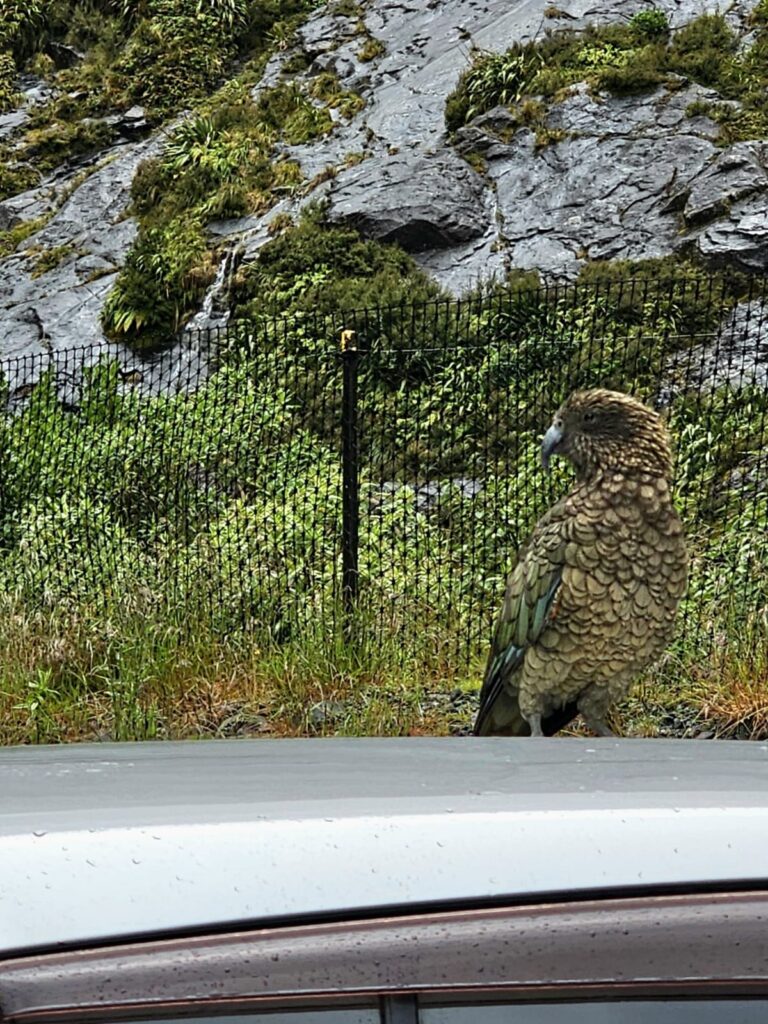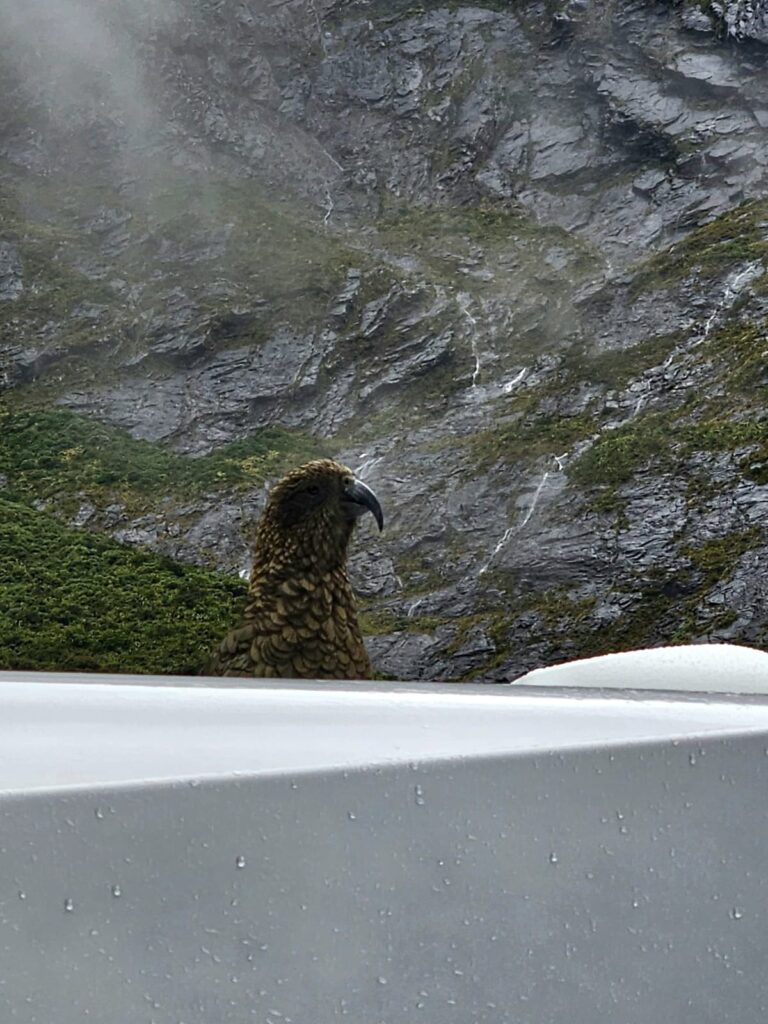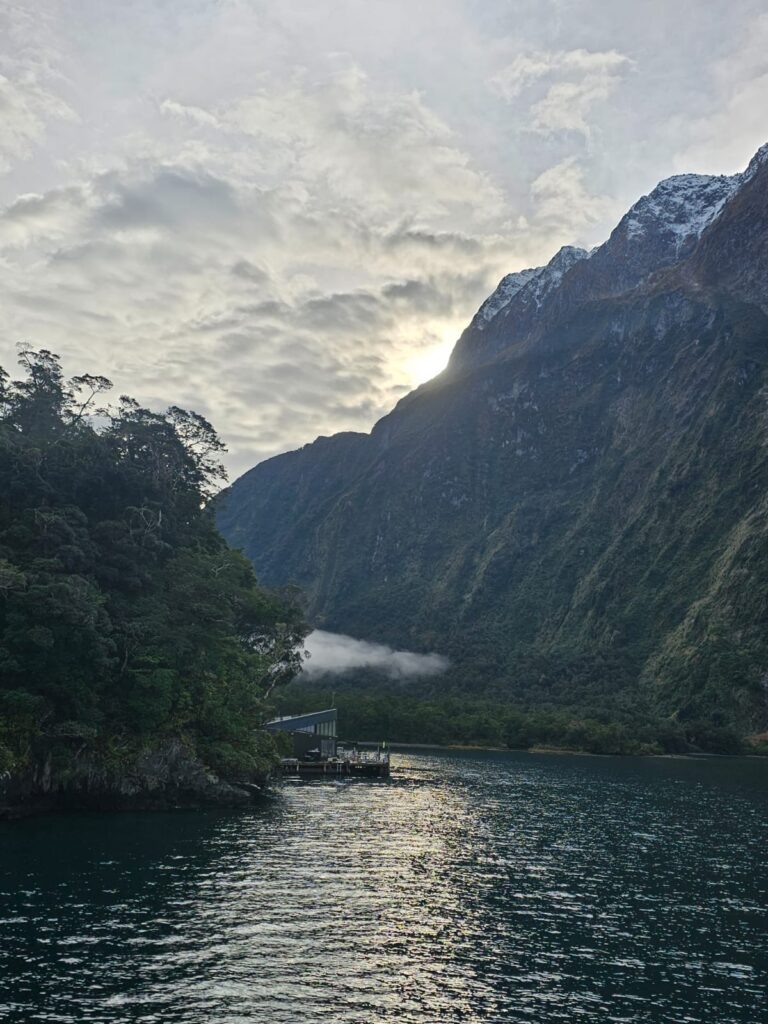My first thought on the drive into Milford Sound was that we were entering a Jurassic lost world. By sheer happenstance, having not seen the film, I have now discovered that much of the Jurassic Park movie that takes this name was filmed in the wider Fiordland National Park, which Milford Sound sits within. The wilderness of Milford’s native rainforest is reminiscent of a time lost to man. Its Māori name, Piopiotahi, sounds itself straight off a map of Pangea.
Milford Sound has a degree of remoteness and wilderness that derails the already consistently tipped scale for New Zealand’s natural wonders. Despite only being 70 km from Queenstown as the crow flies, it is only accessible on the specially constructed Milford Road. From Queenstown the journey spans 290 km. This is because Milford Sound and Queenstown are bisected by the impassable Southern Alps mountain range. Milford Sound is at the conclusion of the one-way Milford road and 120 km away from the nearest civilisation. So beyond Te Anau, the nearest township, you are endowed with the feeling of entering a wild and lost world.

A geological wonder, Milford Sound is the fiord, framed by mountainous peaks cloaked in forest. The park’s highest pinnacle, Mitre Peak, stands 1700 metres above sea level. It is a cavernous valley that was carved out by glacial ice. This ice was the sculptor of some incredibly dramatic geological formations. For example, one of the presiding mountains features a mammoth concave cavity like pictured below. It is easy to feel small in this valley of giants. These large cavities and steep cliff faces are the foundations that, come rainfall, transform Milford Sound into a valley of waterfalls.

Milford is famed for its boat tours across the sound, which follow the valley walls and the hundreds of waterfalls that grace their surfaces. On a particularly rainy day, the water formations are countless. Our first visit was on a rainy day, which was an incredible introduction into how Mother Nature paints the valley in each storm. Our second visit was on a sunny day, so there were considerably fewer waterfalls but far more opportunities to focus on the beauty of Milford’s native forest blanketed in sunlight.

One of the most famous waterfalls in Milford is Sutherland Falls. This fall is the tallest in New Zealand, with three cascades dropping nearly 600 metres in total. It is the culmination stop of every Milford Sound boat tour. Our own tour guide gave us a fair warning on our approach to the falls that we should go to the top deck if we want a close encounter. Little did I realise he took the expression within touching distance quite literally. We were shortly right at the foot of the falls, allowing us to take some fantastic photos but to the detriment of our clothing. Within seconds we were completely drenched. I will never again discard the warning of a tour guide so flippantly.
Milford Sound is also home to a diversity of marine and avian life. We were lucky to be accompanied on our second tour of the fiord by two playful dolphins. Chasing our boat and even flipping out of the water in an extravagant arc, the pair of dolphins were not too shy for a close encounter. The Sound is also the home of much of New Zealand’s Kea population. The small native parrot, known for its intelligence and cheekiness, can be seen hopping from vehicle to vehicle on the Milford Road. The Kea has been the subject of many of my drawings, which I will insert pictures of below.


The drive into Milford is in itself an otherworldly experience. About 20 km before you arrive at Milford, you pass through the 1 km long enclosed Homer tunnel. The mouth of the tunnel opens into the Cleddau valley, and you enter a new world. Here you join a winding road that reaches down behind a semi-circular valley wall streaming with hundreds of small waterfalls. It is here, where tourists gather to take photos, that the kea find their prey in your windscreen wipers and door seals.

With only one boutique lodge and a small number of reduced facility Department of Conservation campsites, Milford Sound is almost completely uninhabited for over 120 km. There are no shops, only a singular petrol pump and visitor centre. With its age-old geological wonders, there is reason Milford is often referred to as the 8th wonder of the ancient world, and conservation efforts only fortify this title. While drawing in millions of tourists each year, most of these visitors come and go within a day (excluding users of the multi-day Milford Great Walk). Henceforth, the area retains the illusion of being untouched and unspoiled. It is a prehistoric wonderland that has been conserved for many centuries and will be for centuries to come.









